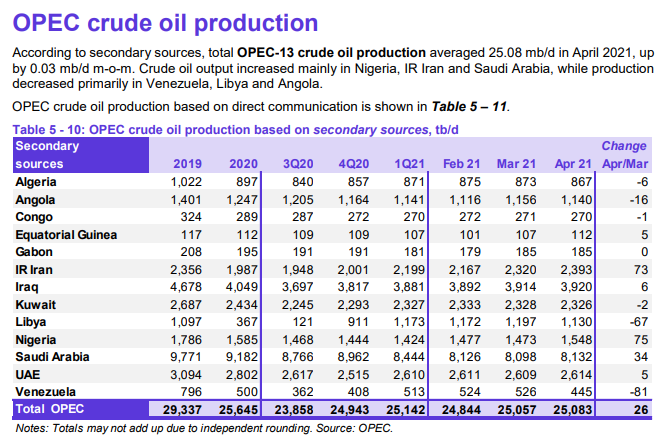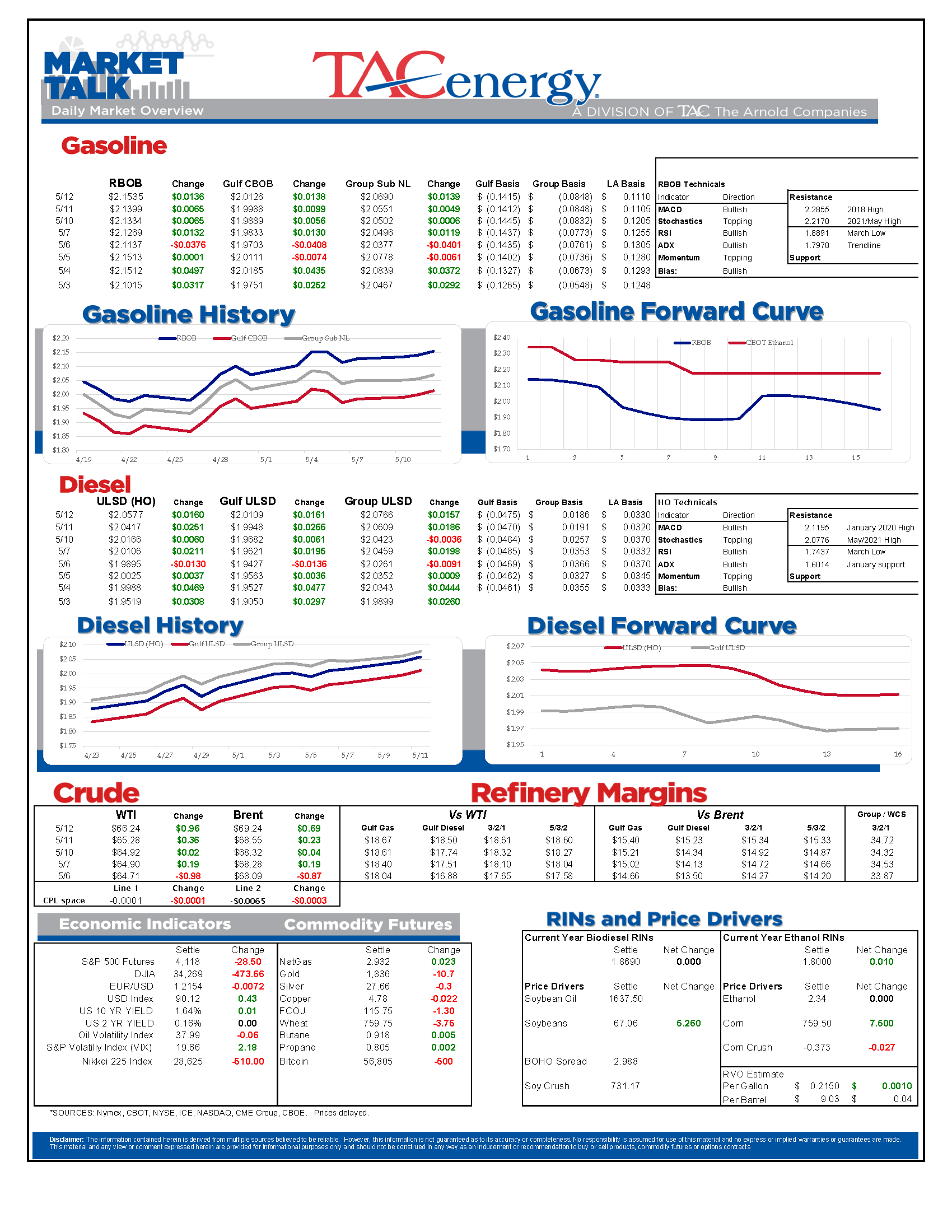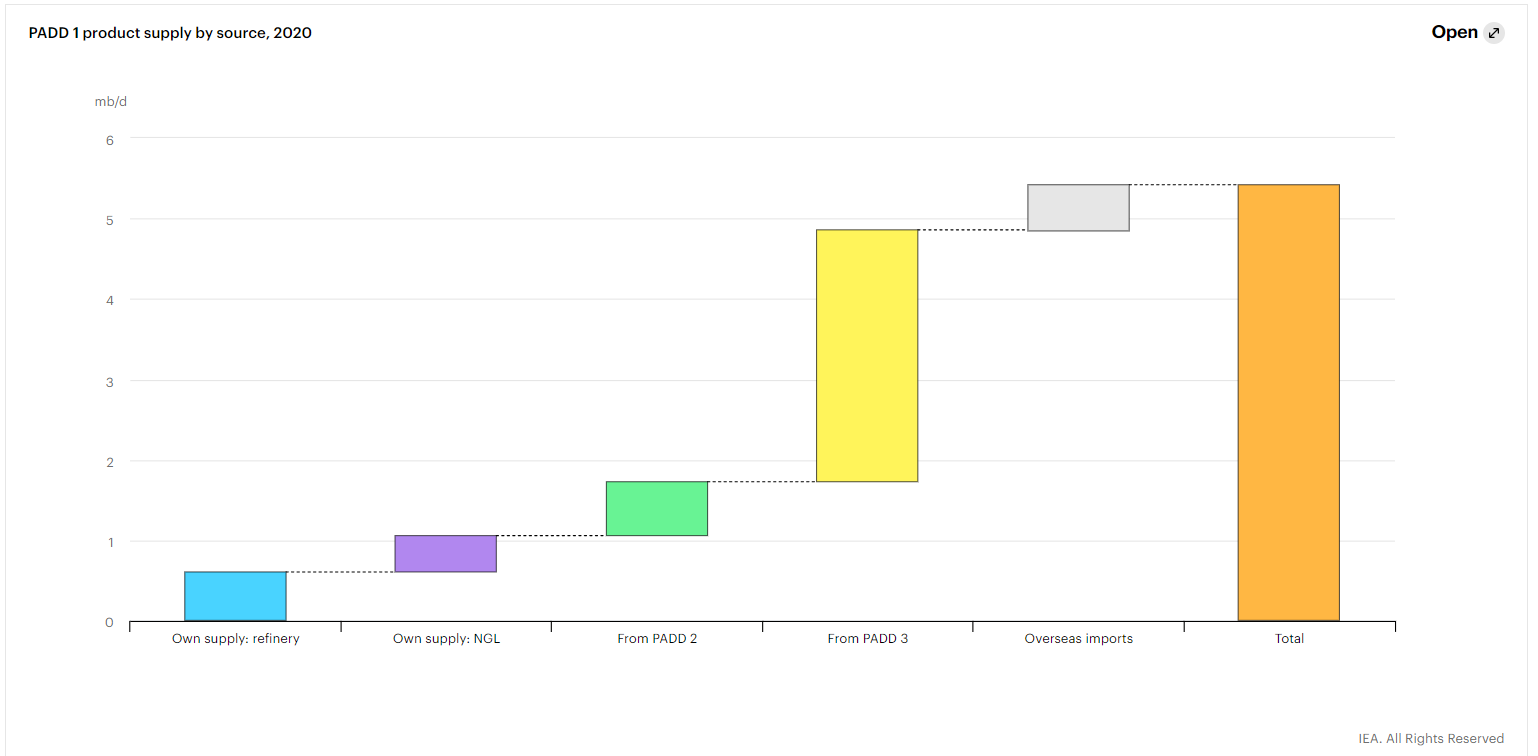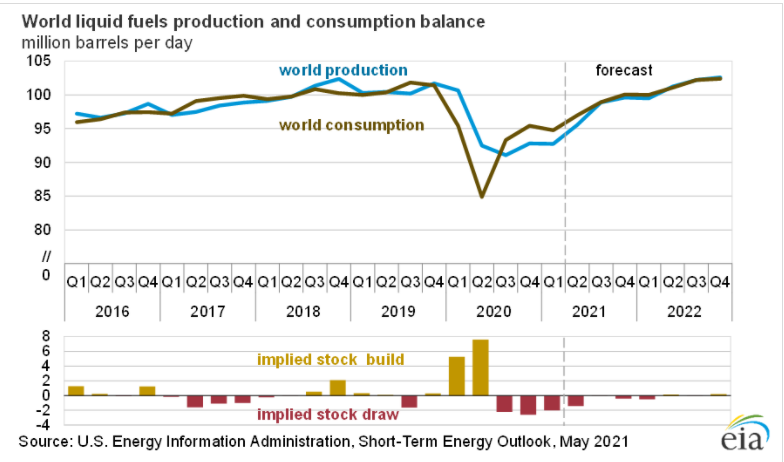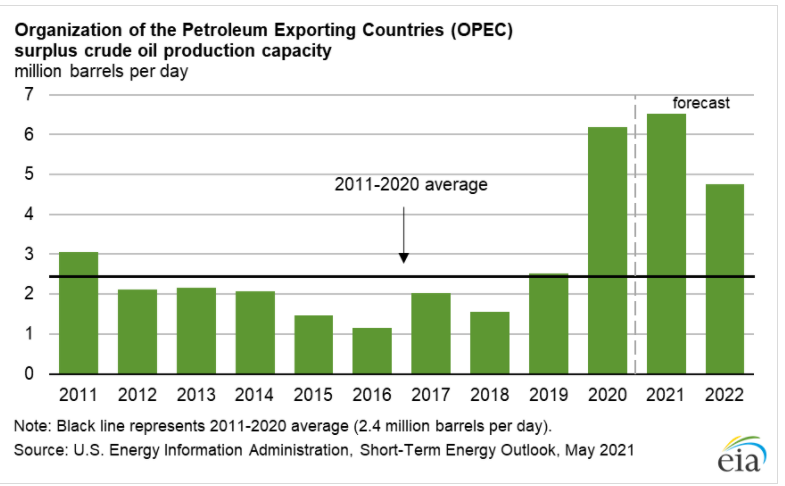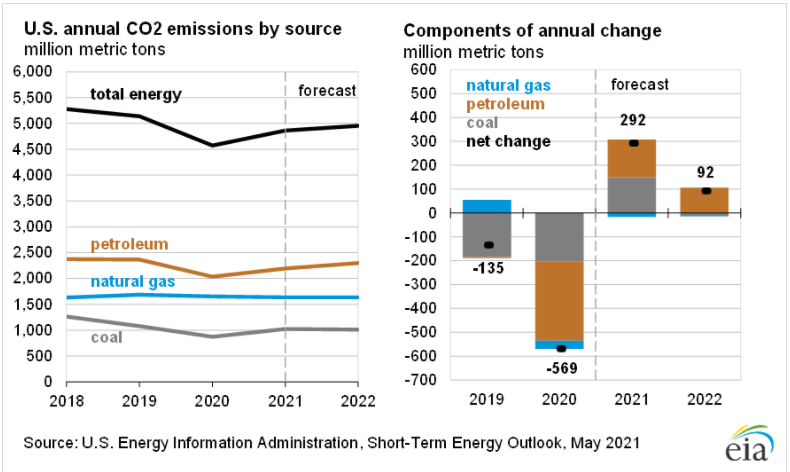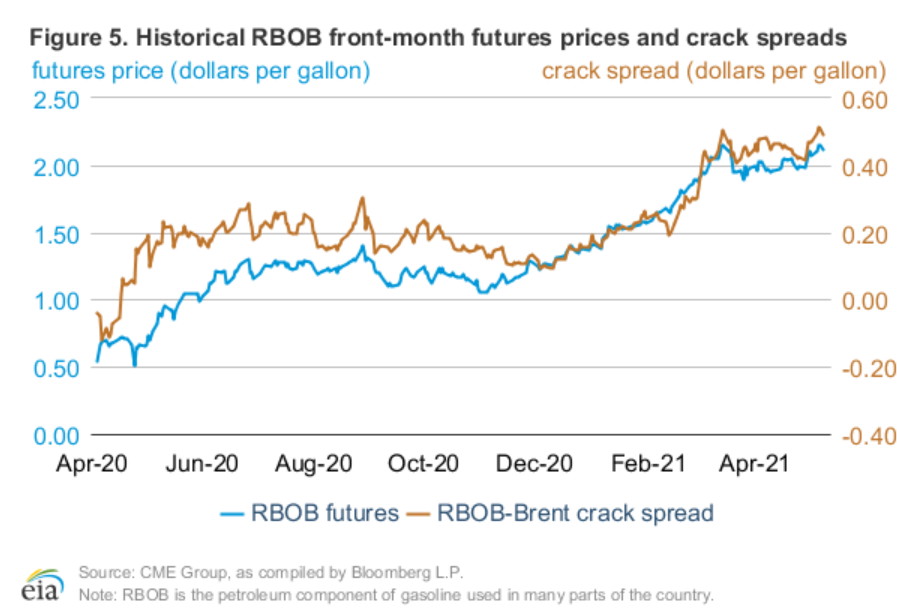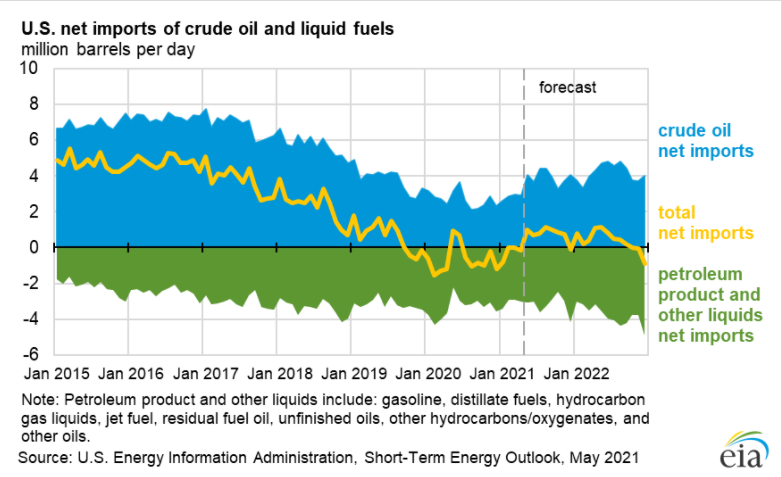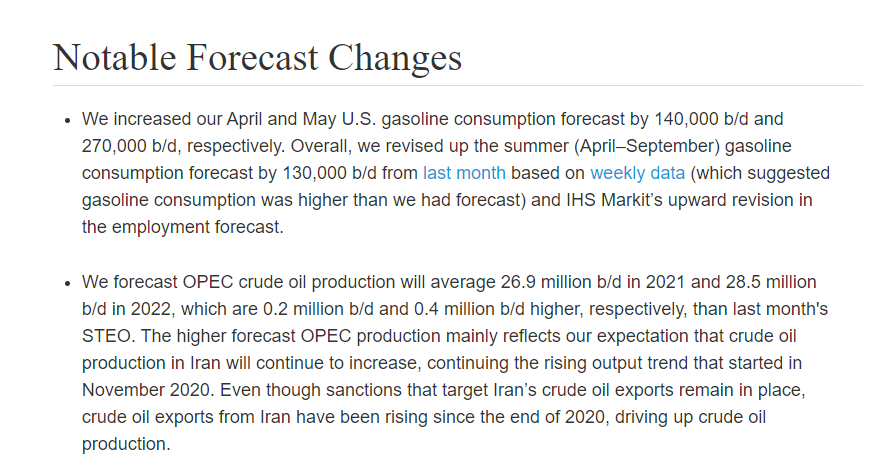Nation Nervously Awaits News On Colonial Pipeline Shutdown

Energy futures continue to tick modestly higher, even as equity markets are moving lower for a third day, as the nation nervously awaits news on the Colonial pipeline shutdown. The EPA has extended RVP waivers through the end of May, and a partial Jones Act waiver is still being considered to help alleviate the supply crunch, but as everyone is learning this week, there just is no good way to replace 100 million gallons/day of supply.
We should find out later today if Colonial is still on track to restart its main lines by the weekend, at least according to the U.S. Energy Secretary, who joined the long list of bureaucrats jumping in front of the camera this week to make it seem like they’re helping the situation. Many drivers in the Southeast aren’t waiting to find out as panic buying is reported across several states, which can create shortages even when the supply network is fully functional. A poll on how many people are filling up even though they’re working from home would be interesting.
Colonial’s website was offline for much of the day Tuesday, and even though the company reported that had nothing to do with last week’s cyber-attack, it didn’t seem to provide confidence that things were improving. The site is up and running today, with an added layer of “I’m not a robot” security. You can see their media updates here: https://www.colpipe.com/news/press-releases/media-statement-colonial-pipeline-system-disruption
Important details from the latest update are that the manual operations are allowing batches already in the line to get to the terminal level where trucks can load it, but since they’re not yet taking in any new batches of fuel at the Gulf Coast origin points, refiners are left without a key outlet for their production, forcing many to cut back on run rates, which will start backing up crude supplies as well, in a less dramatic version of what we witnessed last spring when everyone stayed home for two months.
While we wait to find out if there’s a go/no go for restart, there’s plenty to read as we have monthly reports from the EIA and OPEC, and a new IEA report on the CPL issue all published in the past 24 hours, in addition to the weekly inventory reports.
The API showed a draw in crude oil and diesel stocks last week of 2.5 million and 872,000 barrels respectively, while gasoline stocks had a large increase of 5.6 million barrels. That news didn’t seem to move prices as the data is now considered obsolete since it was collected pre-Colonial shutdown. The EIA report is due out at its normal time today, and is likely to be shrugged off as well. With numerous gulf coast refineries cutting rates this week due to the shutdown, we could see large builds in crude, and large declines in refined product inventories in next week’s report.
The EIA’s monthly forecast increased estimates for gasoline demand this summer, although totals are still expected to be below what we saw in 2019. The monthly report also finally acknowledged the influence record high ethanol and RIN prices are having on refiners and their product prices. Distillate demand increased to its highest level since November 2019 in April, “likely” driven by high freight demand. Here too the agency expects that strength to continue this summer.
OPEC’s monthly report showed the cartel’s output held steady for the month, with increases from Iran, Nigeria and Saudi Arabia offsetting declines in Libya and Venezuela. The report held its global demand estimates steady for the year, and highlighted the return of US drilling operations that will drive non-OPEC production gains for the next year.
The IEA released a note on the Colonial situation, and calling for greater focus on cyber resilience. That report highlighted the unique situation the East Coast (PADD 1) is in as the largest “importer” of refined products in the world that continues to see a drop in supply options thanks to the shutdown of numerous refineries over the past decade. Perhaps it’s even more remarkable how well supplied these markets are most of the time given the huge amounts of fuel needing to be transported every day to meet that demand.
As a result, if considered on its own, PADD 1 is the largest net importer of refined products in the world, ahead of all of Africa and the Southern Asia Pacific (Australia, Indonesia, Singapore and New Zealand combined).
Click here to download a PDF of today's TACenergy Market Talk.
Latest Posts
Markets Rallying To End The Week, Diesel Prices Lead The Way For Energy
Energy Markets Rally Again Thursday After A Choppy Wednesday Session
Week 16 - US DOE Inventory Recap
Energy Markets Trading Quietly In The Red As Ethanol Prices Rally To Five-Month High
Social Media
News & Views
View All
Markets Rallying To End The Week, Diesel Prices Lead The Way For Energy
Energy markets are rallying to end the week, with diesel prices leading the way up 2.5 cents in the early going. Equity markets are also rallying after a big Thursday selloff as strong tech earnings seem to be outweighing the FED’s favorite inflation gauge remaining stubbornly high.
RBOB gasoline futures are trading higher for a 4th straight day, but despite bouncing nearly 14 cents from Tuesday’s low, they still need to rally another nickel to break the downward sloping pattern forming on the weekly charts. Seasonal factors could go either way for gasoline for the next few weeks as we’re in the Spring peaking window, and while the high set April 12th would fit the annual pattern nicely, a May price peak is certainly not unusual, and if $2.85 is broken it seems like RBOB will run to $3 in a hurry.
Diesel prices have bounced 7 cents after touching a 5-month low on Monday but need to climb back above $2.60 to reduce the chance of a slide to $2.20 or lower should the chart support around $2.50 break down.
Back to the shadow war: After a relatively quiet few weeks in the Red Sea, Houthi attacks on ships have started again over the past few days, although so far, no major damage has been reported.
ExxonMobil reported another strong quarter in Q1 with more than $10 billion in free cash flow generated, even though earnings in its refining segment were down 67% from the first quarter of last year. The company noted the success of its Beaumont refinery expansion that came online last year and marked the only major refinery expansion in the US in over a decade. It's worth noting that within the refining segment, international earnings suffered more than domestic facilities did, with non-US refining earnings down 77% from a year ago as crack spreads came back to reality after the record-setting quarters in 2022 and 2023.
Chevron followed a similar pattern (as expected) in its Q1 report, noting strong operating cash flows of $6.8 billion in total, despite downstream earnings falling more than 56% for the quarter.
The company also highlighted its expanding marketing network along the US West and Gulf Coast markets encompassing more than 250 retail stations and highlighted its new solar-to-hydrogen project in California.
Phillips 66 continued the trend, reporting a “strong” quarter in which earnings were 63% lower than a year ago. The company highlighted the conversion of its Rodeo refinery which is now producing roughly 30mb/day of RD and is expected to ramp up to 50mb/day in the 2nd quarter. That facility had a capacity of more than 120mb/day prior to its conversion, and it used to produce gasoline along with its diesel. The company also noted its ongoing plans to sell assets that no longer fit its strategy, highlighting retail assets in Germany and Austria as being on the chopping block, while not mentioning any of its US refining assets that have long been rumored to be for sale.
Delek reported another upset at its Alon Big Spring refinery Thursday, which has become another one of the TCEQ’s frequent fliers after suffering damage from the cold snaps in both 2021 and earlier this year.
A harsh reality sinking in: Mexico’s President has made plenty of headlines with fictitious claims of energy sovereignty in the past few years, but not only is the country’s new Dos Bocas refinery still not producing finished products on any sort of meaningful scale, two of its other facilities have suffered fires recently forcing the country to import even more product from the US. This phenomenon continues to help US Gulf and West coast refiners who would be struggling (even more) to move their excess with sluggish domestic demand.
Click here to download a PDF of today's TACenergy Market Talk.

Energy Markets Rally Again Thursday After A Choppy Wednesday Session
Energy markets are trying to rally again Thursday after a choppy Wednesday session. RBOB gasoline futures are leading the push higher, on pace for a 3rd consecutive day of gains after finding a temporary floor Tuesday and have added 12 cents from those lows.
Equity markets are pointing sharply lower after a weak Q1 GDP estimate which seems to have contributed to a pullback in product prices over the past few minutes, but don’t be surprised if the “bad news is good news” low interest rate junkies start jumping in later on.
The DOE’s weekly report showed sluggish demand for gasoline and diesel, but inventory levels in most markets continue to follow their typical seasonal trends. Refinery runs held fairly steady last week with crude inputs down slightly but total gross throughputs up slightly as most facilities are now back online from a busy spring maintenance season and geared up for peak demand this summer.
Propane and propylene exports spiked to a record high north of 2.3 million barrels/day last week, which demonstrates both the US’s growing influence on global product markets, and the steady shift towards “other” products besides traditional gasoline and diesel in the level of importance for refiners.
The EIA acknowledged this morning that its weak diesel consumption estimates reflected the switch to Renewable Diesel on the West Coast, although they did not provide any timeline for when that data will be included in the weekly survey. The agency acknowledged that more than 4% of the total US consumption is now a combination of RD and Biodiesel, and that number is expected to continue to grow this year. This morning’s note also suggested that weak manufacturing activity was to blame for the sluggish diesel demand across the US, while other reports suggest the freight recession continued through Q1 of this year, which is also contributing to the big shift from tight diesel markets to oversupplied in several regions.
Valero kicked off the Q1 earnings releases for refiners with solid net income of $1.2 billion that’s a far cry from the spectacular earnings north of $3 billion in the first quarter of 2023. The refining sector made $1.7 billion, down from $4.1 billion last year. That is a pattern that should be expected from other refiners as well as the industry returns to a more normal market after 2 unbelievable years. You wouldn’t guess it by looking at stock prices for refiners though, as they continue to trade near record highs despite the more modest earnings.
Another pattern we’re likely to see continue with other refiners is that Renewable earnings were down, despite a big increase in production as lower subsidies like RINs and LCFS credit values sting producers that rely on those to compete with traditional products. Valero’s SAF conversion project at its Diamond Green joint venture is progressing ahead of schedule and will give the company optionality to flip between RD and SAF depending on how the economics of those two products shakes out this year. Valero also shows part of why refiners continue to disappear in California, with operating expenses for its West Coast segment nearly 2X that of the other regions it operates in.

